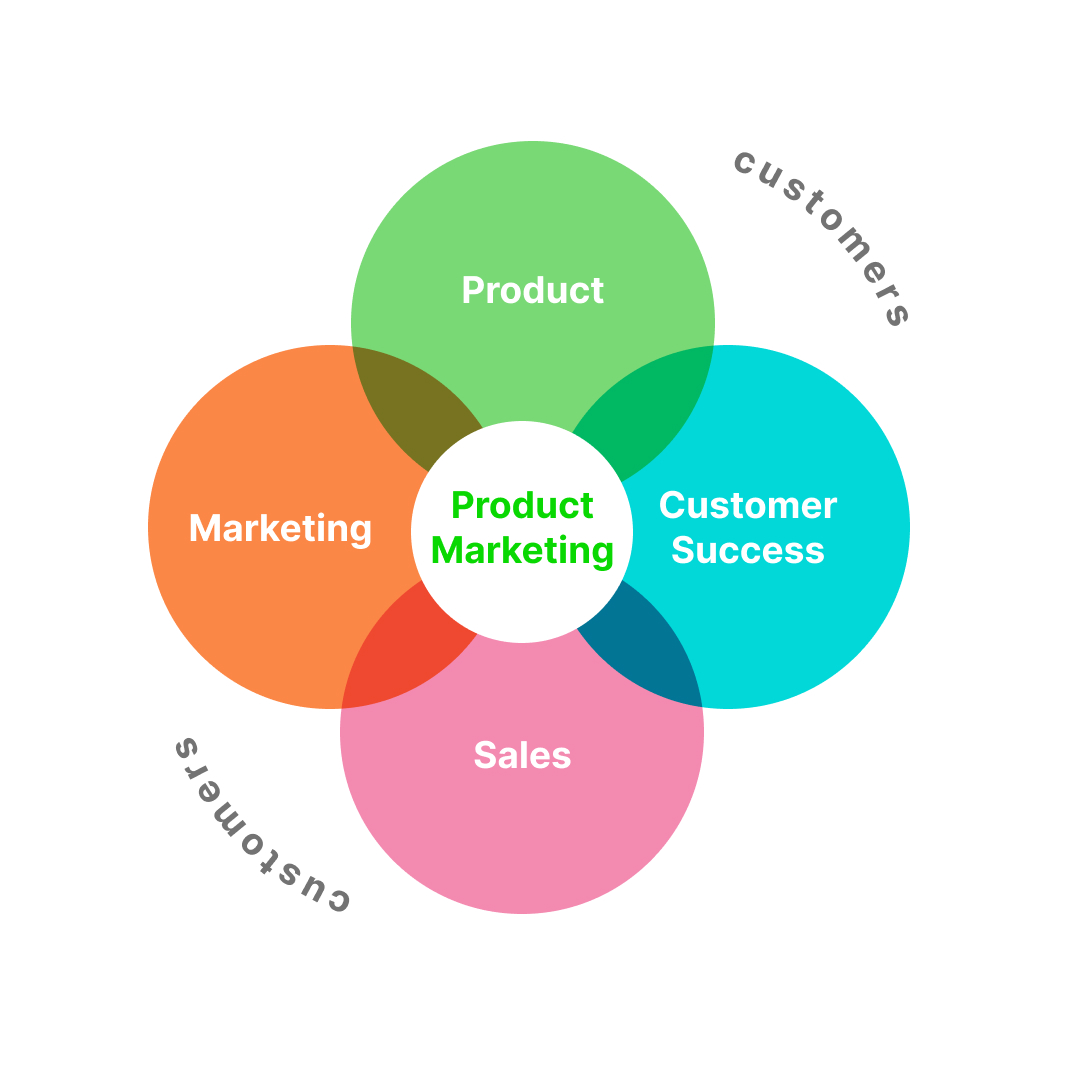If you’re as old as me you’ll remember the incredibly popular ‘Mac vs PC’ ads of the early 2000s.
Simple, effective, funny – these three characteristics defined the first great campaign of the new millennium, from TBWA\Chiat\Day. The Mac vs. PC spots launched in 2006, starring Justin Long as the hip Mac and John Hodgman as the bumbling PC. The way the two computer brands were personified gave Apple a competitive edge, without coming across as unpleasant or obnoxious. The campaign lasted through 2009, totaling 66 bite-sized spots.
The Mac vs PC campaign is a wonderful example of a best-in-class relationship between product and product marketing teams. It demonstrates how organisations can generate incredible success from strong collaboration across many company verticals. Here I’ll examine why it is so vital for product and product marketing teams to work together.
What is Product Marketing?

Product marketing is the strategic function responsible for bringing a product to market and ensuring its success. It bridges the gap between product development and sales, focusing on understanding customer needs, defining product positioning, and crafting compelling messaging that resonates with the target audience. So what’s the different between marketing managers and product marketing managers? Marketing managers concern themselves with the overall marketing strategy of the company as a whole whereas product marketing managers focus exclusively on promoting and selling specific products or solutions. Product marketing managers need to work really closely with the product team to get a really in-depth understanding of the products and the unique and differentiating components or features.
Typically marketing will deal with execs and sales to make sure that the overall marketing strategy aligns with the company’s goals. Product marketing will need to build a solid relationship with the product development team to make sure users’ needs and expectations are met or surpassed.
The Importance of Collaboration
-
Customer-Centric Approach: Product teams often concentrate on building features and functionalities. Marketing teams, on the other hand, have their finger on the pulse of the market and customers. When these teams collaborate closely, they ensure that product development aligns with customer needs, ultimately leading to products that customers love.
Example: Apple’s iPhone is a prime example of how a deep collaboration between product and marketing teams can lead to tremendous success. The product team’s innovation in creating a revolutionary smartphone was complemented by the marketing team’s ability to position it as a must-have device, creating a global sensation.
-
Effective Product Launches: Successful product launches require seamless coordination between product development and marketing efforts. The product team needs to create a compelling product, while the marketing team must generate buzz and excitement around it.
Example: Tesla’s Model 3 launch was a masterclass in collaboration. The product team delivered an affordable electric car with cutting-edge technology, and the marketing team generated massive anticipation through clever teasers and online reservations, resulting in over 400,000 pre-orders within a week.
-
Feedback Loop: Product teams need real-world feedback to iterate and improve their products continually. Product marketing teams, through customer interactions and market research, can provide invaluable insights into what’s working and what’s not.
Example: Dropbox has a strong feedback loop between product and product marketing. Their referral program, Dropbox Refer a Friend, was not only a product feature but also a marketing campaign. The marketing team promoted it effectively, while the product team used marketing-driven insights to refine the program and make it more user-friendly.
-
Alignment on Messaging: Consistency in messaging is vital for brand identity and customer trust. When product and marketing teams collaborate on messaging, customers receive a coherent and compelling narrative.
“Marketing is not the art of finding clever ways to dispose of what you make. It is the art of creating genuine customer value.”
Philip Kotler
Product marketing and product teams need to work very closely together to complete what I call an accelerative joyous feedback loop. Whilst some of the product team’s function will involve discovery – marketing sizing, segmentation, unmet needs, jobs to be done and so on, the product marketing team and help bring to life the discovery work in speaking to the market. They can devise strategies that do wonders for the product and bring to life more than just the features.
In essence the collaborative approach between product and product marketing means that you’re not selling just a product, you’re selling an experience. This is why companies such as Apple do so well. Their incredibly successful Mac vs PC campaign ran for years and showcased over 60 different videos. They concentrated on iMovie, iPhoto, iTunes and ease of use as key pillars. By bringing personality into the product and repeating the same message over and over the create a memorable experience for their customers.
As Kotler surmised -creating genuine value isn’t just selling a product, it is selling an experience. People don’t buy a Mac because it is a computer (they’re more expensive than their PC counterparts), they’re buying into the entire Apple experience differentiated by clever product marketing, design, ease of use and attention to detail.